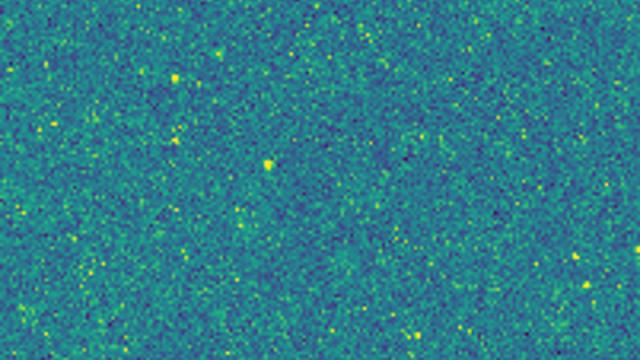To help us grok the immensity of the cosmos, the European Space Agency has released a remarkable image of space in which every point is an entire galaxy. If you didn’t feel insignificant before seeing this, you sure as hell will now.
As The Hitchhiker’s Guide to the Galaxy aptly reminds us, space is big — so big that our puny minds can scarcely appreciate how “vastly, hugely, mind-bogglingly big it is”.
Indeed, our own galaxy, the Milky Way, measures around 100,000 light-years across, and it’s packed with about 100 billion stars (and that’s the low estimate). So there are roughly 14 stars in the Milky Way for every human being on Earth.
With that humbling realisation in mind, take a look at this incredible image released by the ESA. It was captured by the Herschel Space Observatory’s Spectral and Photometric Imaging Receiver (SPIRE), and it shows a patch of sky near the constellation of Coma Berenices, or Berenice’s Hair, as seen from Earth’s northern hemisphere.
This region of the night sky is far from the dense stellar disc of the Milky Way, so astronomers can gaze into the distance with an unhindered view of the cosmos.
The image shows the North Galactic Pole, and it covers some 180 square degrees of the sky. Interestingly, this area happens to contain a galaxy-rich cluster known as the Coma Cluster, which contributes at least 1000 points of light to this image.
Each tiny mark on this map represents the heat emanating from dust grains lying between the stars of each galaxy. Most of the galaxies in this image produced their signatures well before our Solar System came into existence, but we’re only seeing them now, tens of billions of years later.
This single filter map was compiled as part of the Herschel Astrophysical Terahertz Large Area Survey (H-ATLAS).
Images such as this one, aside from making us feel incredibly small, allow astronomers to estimate, via extrapolation, the total number of galaxies across the entire observable universe.
A couple of years ago, astronomers came to the startling realisation that the universe contains up to 10 to 20 times more galaxies than previously thought. The current best guess is that the universe contains somewhere between one and two trillion galaxies.
This means the universe is absolutely packed with stars, somewhere on the order of 700 sextillion stars — that’s seven followed by 23 zeros.
And that’s just within the observable universe. Anything beyond the cosmological horizon, the most distant light that reaches Earth, is still unknown to us, so it’s impossible to know the true figure. It’s a vastly, hugely, mind-bogglingly big universe, indeed.
[ESA]
